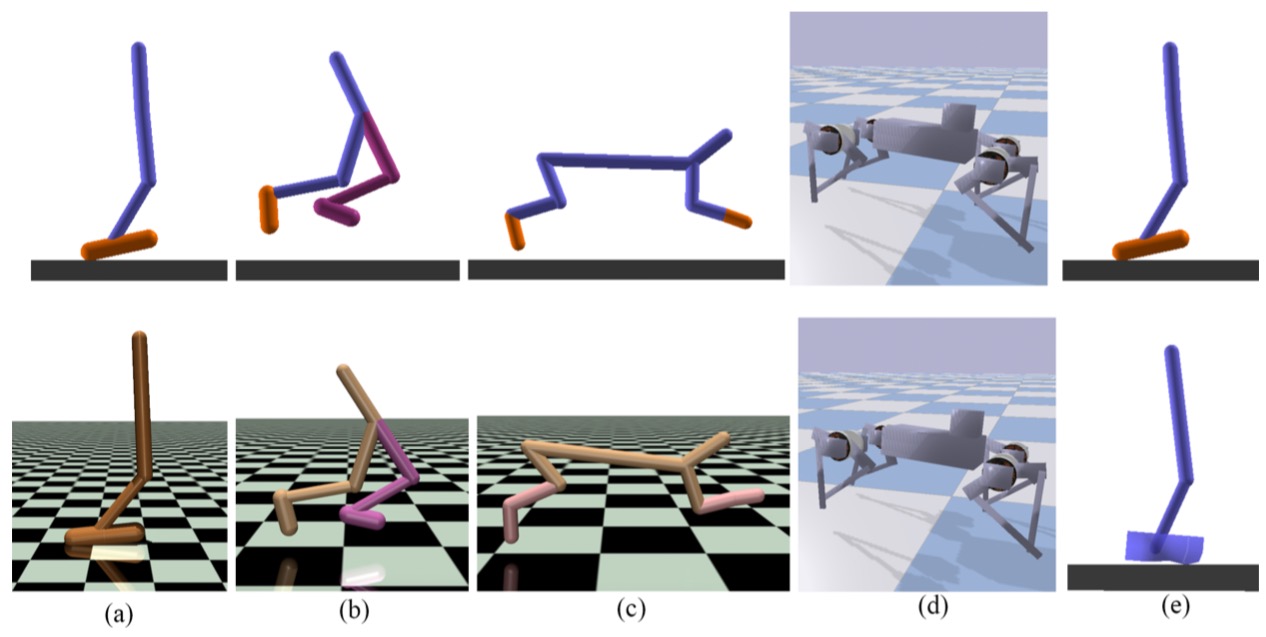
Computer simulation provides an automatic and safe way for training robotic control policies to achieve complex tasks such as locomotion. However, a policy trained in simulation usually does not transfer directly to the real hardware due to the differences between the two environments. Transfer learning using domain randomization is a promising approach, but it usually assumes that the target environment is close to the distribution of the training environments, thus relying heavily on accurate system identification. In this paper, we present a different approach that leverages domain randomization for transferring control policies to unknown environments. The key idea that, instead of learning a single policy in the simulation, we simultaneously learn a family of policies that exhibit different behaviors. When tested in the target environment, we directly search for the best policy in the family based on the task performance, without the need to identify the dynamic parameters. We evaluate our method on five simulated robotic control problems with different discrepancies in the training and testing environment and demonstrate that our method can overcome larger modeling errors compared to training a robust policy or an adaptive policy.

The environments used in our experiments. Environments in the top row are source environments and environments in the bottom row are the target environments we want to transfer the policy to. (a) Hopper from DART to MuJoCo. (b) Walker2d from DART to MuJoCo with latency. (c) HalfCheetah from DART to MuJoCo with latency. (d) Minitaur robot from inaccurate motor modeling to accurate motor modeling. (e) Hopper from rigid to soft foot.
This material is based in part upon work supported by the National Science Foundation under grant IIS-1514258. Any opinions, findings, and conclusions or recommendations expressed in this material are those of the author(s) and do not necessarily reflect the views of the National Science Foundation.
Go to Greg Turk's Home Page.